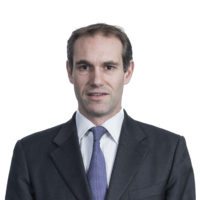The European Opportunity
Privcap: What’s the environment for fundraising in Europe today?
Charlie Jolly, RSM UK LLP: There’s plenty of appetite from institutional investors at the moment for private equity exposure. That said, the fundraising environment is never that easy, because the supply always seems to meet demand. There’s always plenty of competition to attract institutional capital.
Given that competition, which types of managers tend to be most successful?
Jolly: The most successful GPs are able to raise the majority off their capital from existing investors. And they normally get to that position through having had a very stable team, a consistent strategy that they’re able to articulate well, and consistently outperforming their peers.
Investors look very carefully into the track record, and into the allocation of the track record, and then investigate how the team succeeded and whether the strategy can be successful again. Then they’ll try to understand whether the key individuals will remain motivated to replicate that strategy together through the next fund cycle.
Are there particular strategies that are struggling to raise funds?
Jolly: It’s always been difficult to raise funding for venture strategies in Europe, particularly compared to those in the U.S. That said, we’ve had probably our strongest venture fundraising market in many years in Europe.
What are you seeing in particular geographies within Europe?
Jolly: Funds that are focused on Central and Eastern Europe have had a tougher time than elsewhere because of issues with foreign exchange rates. It’s a difficult region to invest across because a lot of the markets within it don’t have a great deal of critical mass; managers need the flexibility to invest across the whole region. But then you have to deal with multiple currencies and very different economic conditions and cultures.
How are the AIFMD regulations progressing? Is it impacting fundraising?

Jolly: AIFMD has caused headaches for managers; however, to put it in context, fundraising across Europe has been rising quite significantly in the last couple of years. So although there’s a difficult regulatory landscape, it hasn’t stopped general partners from raising considerable amounts of capital and amassing a lot of dry powder.
AIFMD was originally designed to create a single European market. Yet in reality many of these regulations have been written differently in each country. Although there’s a single “passporting” system, you still have local regulations that need to be abided by as well.
From that point of view, it hasn’t necessarily achieved what it set out to achieve. It doesn’t mean it won’t in the future, but at the moment, there are still a lot of regulatory hurdles to get over if you’re marketing across Europe.
How would you describe the European market opportunity to an investor outside the region?
Jolly: The European markets themselves are reasonably complex. Because you’re operating across a continent with different languages and different currencies, industries may be more fragmented and the markets can be comparatively inefficient, and perhaps offer more opportunity, than in a market like the U.S. A general partner that’s able to expand a platform investment internationally can grow a large business through acquisition in Europe quite effectively. And you have some very strong management teams in the region that are capable of making a success of that strategy.
